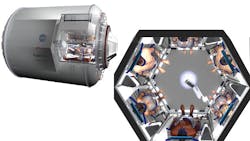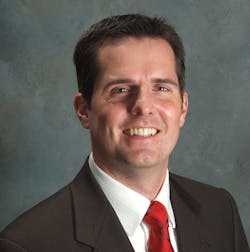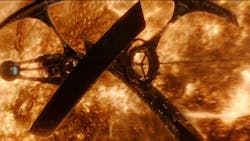Hibernation Technology: From “Passengers” to Real-Life Space Travel
It is a 120-year space flight from earth to Homestead II. Avalon is the spaceship with a crew and 5,000 passengers in hibernation. They should awaken when they arrive at Homestead II, but an “accident” that “messes up” a clock chip causes passenger and mechanical engineer Jim Preston (played by Chris Pratt) to awaken a bit early—by about 90 years. Jennifer Lawrence plays Aurora Lane, a journalist who is also awoken a bit early.
You can check out the movie reviews for how the film plays out. I did see it the other day and enjoyed it, but I will leave the film criticism to others.
In the meantime, we take a look at one of the main technology pieces within the film, the hibernation support that is keeping the rest of the crew in stasis until they arrive. The entire ship is automated, including Arthur, a robot bartender (played by Michael Sheen). The computer system is actually part of the problem in the movie, but limitations on restarting hibernation in flight are a key device.
The need for hibernation in interstellar flight has been covered in many sci-fi and technical articles and books. The massive distances involved raise the time requirements to the point where either a generational ship is required—where multiple generations will live and die—or hibernation is required, unless we find a way to bypass the speed of light.
We are far away from needing this level of hibernation, but it is not as far-fetched as you might think: Even using this type of technology for a few weeks, months, or years may be beneficial for exploring and colonizing our galaxy.
There are a number of reasons why this approach makes sense. The amount of space necessary to maintain a person in hibernation is significantly less than that required by someone not in hibernation, like the simulation that SpaceWorks Enterprises developed for NASA (Fig. 1).
The reduced space means a smaller, lighter habitat that requires less energy to move it from point A to point B. It is also a smaller amount to protect from solar radiation and so on. Hibernating persons require less oxygen and food. The savings would be significant even if the distance between the two points is not on the order of interstellar travel.
SpaceWorks Examines Hibernation
I spoke with SpaceWorks' president, Dr. John Bradford (Fig. 2) about space hibernation technology. Spaceworks is an aerospace engineering concept design and systems analysis firm that focuses on next-generation space transportation systems and technologies for human and robotic exploration of space. They typically work in conjunction with NASA.
Torpor is a state of decreased physiological activity in an animal that usually includes a reduced body temperature and metabolic rate—what we often call hibernation. The Torpor project examined movement of people from earth to Mars.
Even the relatively short trip to Mars (six to eight months) can benefit from a crew and passengers being in a torpor state, owing to the significantly reduced mass and volume of the in-space habitat for outbound and inbound mission segments. This could be totally automated, as in the movie, but since the trip time is significantly shorter, even having a small crew active during the flight would be viable.
The habitat would be a very small module, versus a typical habitat that would require space for food preparation and eating, exercise, bathrooms, sleeping quarters, entertainment, and so on. Science stations would provide additional research en route, but there isn’t a lot that could not be done automatically.
The approach essentially eliminates many psychological and social challenges of prolonged space flight. This can simplify crew and passenger selection, because they would not be under the same stress as with an extended flight while being active.
Hibernation has been studied in animals, but not so much with humans. While there have been emergency instances where people have been kept in a torpor state for a couple days to a couple weeks when traumatic injuries were involved, this has not been done or studied with healthy humans. This means there is still a lot of research necessary before this type of technology is employed, though there is a lot of study being done that is related such as neural stimulation of muscles especially for comatose or bedridden patients.
There is also the issue of short- versus long-term hibernation. Even multiple, short hibernation sequences of a couple weeks can significantly reduce space and resource requirements, especially as the size of the crew and number of passengers increases.
The wake-up sequence in the movie is interesting from a cinematic and augmented reality perspective, but the lethargy portrayed by the actors is in line with current thinking and research, since there is no REM state during hibernation. This means they wake up sleep-deprived and often need to sleep to recover. Brain synapses also tend to disconnect in hibernation, requiring some time to reconnect upon waking up.
Hibernation systems will initially look more like the common room scenarios that SpaceWorks is showing. Individual pods, like the ones used in “Passengers” (Fig. 3), tend to require more technology and resources, although there is always a tradeoff. Long-term research is needed to address issues from infections to atrophy, so this is a topic that will continue to get a good bit of attention.
I leave you with a shot of Avalon when it is doing a slingshot maneuver around a star to gain speed towards Homestead II (Fig. 4).
Maybe next time I can examine how they redistributed the computer software to balance the load due to the loss of one of the on-board computers. But that’s another story.





